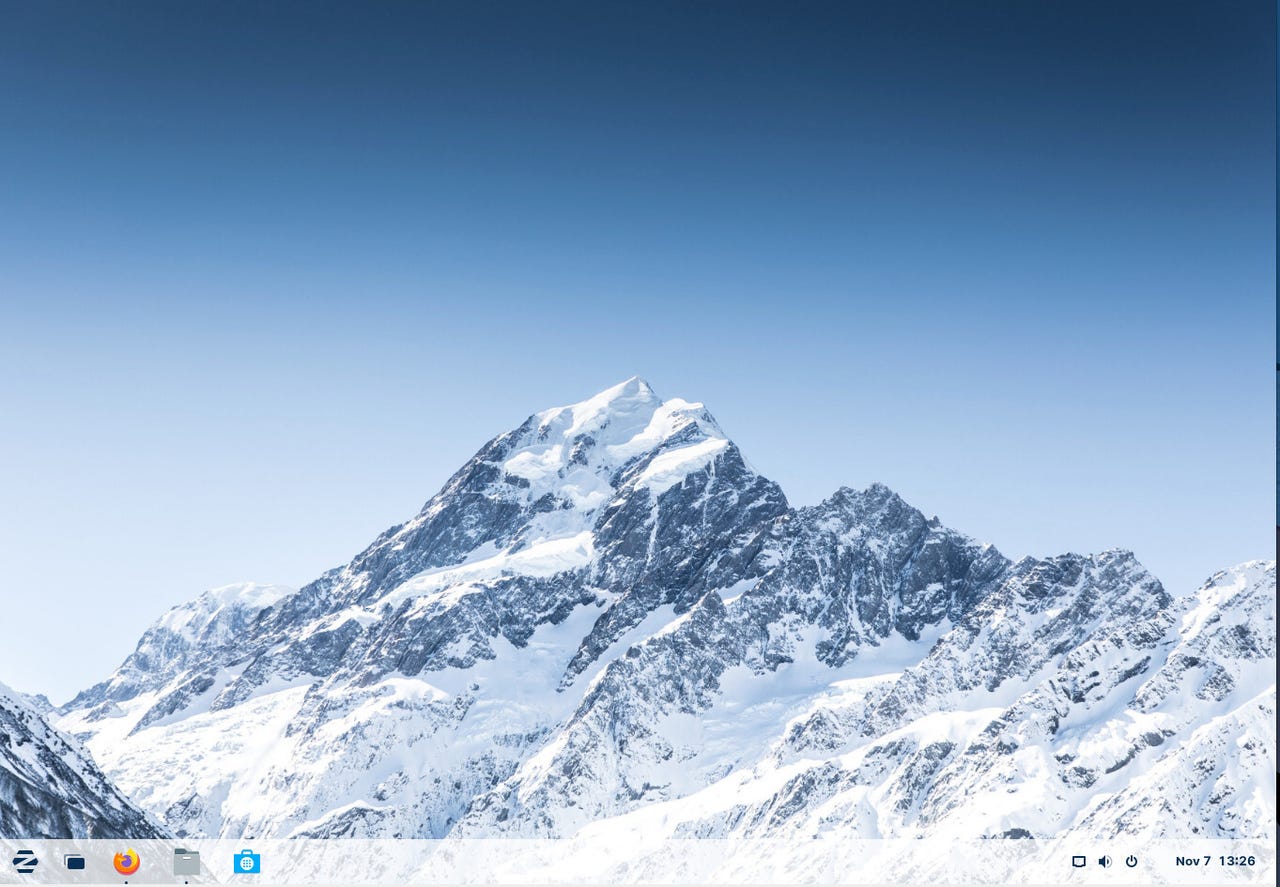
































ZorinOS
Jack Wallen/Linux has been around since 1996 and has, over the years, been maligned as being too difficult for average users. In some cases, there were claims that Linux was simply too challenging for anyone who wasn't a developer. When I first started using Linux (back in '97), it was very challenging -- beyond the grasp of average users and even some advanced Windows users.
Also: How to choose the right Linux desktop distribution for you
Back in the day, it didn't matter if you were using Caldera Open Linux, Red Hat, a BSD, or any other distribution, as they were all pretty much on equal footing.
However, as the years have flown by, new distributions have come into play that do actually target new users. Distros like Ubuntu, Linux Mint, ZorinOS, and Deepin are all outstanding options for any computer user, whether they've used Linux or not. When those distributions started appearing on the market, it was great news for Linux as a whole. Because of the complex nature of the operating system, very few people were using it and it looked very much like it would go the way of OS/2. But when the new crop of user-friendly distributions started appearing, Linux found itself finally gaining some popularity.
As time continued progressing, those distributions continued evolving and inspired new distributions to join the mix.
That brings us to now and the playing field for Linux is wide open. That can be problematic for anyone just starting out with the open-source operating system, which has led me to come up with a three-tier level of difficulty for Linux distributions.
Also: Pop!_OS might have a complicated name but it makes using Linux so easy
With this system at the ready, you'll be able to quickly know which Linux distribution is the right one for you or any of the people you deal with who are looking for a new operating system.
With that said, let's get to the tiers.
This tier of Linux usability consists of distributions that are focused primarily on those new to Linux. If you've never used Linux, never installed an operating system, and have never typed a command in a terminal window in your life, these distributions are right up your alley.
Also: The best Linux distros for beginners
Tier 1 distributions include all of the software you should need and a well-designed GUI tool to make installing other software simple. Part of the complexity in modern Linux distributions is the inclusion of Snap and Flatpak applications within the GUI. From my perspective, if you require users to install Snap or Flatpak packages from the command line, you are out of the running for Tier 1. To be considered for Tier 1 inclusion, a distribution must also use a desktop environment that is simple to use, such as KDE, Cinnamon, Budgie, and Mate. As much as I believe in the GNOME desktop (and find it very easy to use), for absolute beginners, it changes the metaphor too much.
With that said, here's the list of distributions I include in Tier 1:
That's pretty much it for Tier 1. Understand, I've set the bar pretty high with the inclusion of Snap or Flatpak support in the App Store tools, which limits the number of distributions that are available. The reason for this inclusion is there are important apps (such as Slack, Zoom, and more) that are offered via Snap or Flatpak, which makes them very easy to install. I wouldn't want to recommend a distribution of Linux that is ready for anything out of the box.
Now we get into the heart of the Linux distribution party. This is where the majority of distributions will live. These variations of Linux could be used by anyone new to Linux, with the understanding that they might have to use the command line at some point. For example, there might be a piece of software only available as a Snap or Flatpak package, but the distribution hasn't baked either into the GUI app store. That alone knocks a distribution out of contention for Tier 1.
Also: Cool things you can do with the Linux desktop that you can't do with MacOS or Windows
Also, these distributions might have a desktop environment that includes features that are far more advanced than a new user might need. Or maybe there are just way too many options that could easily overwhelm a new user. This list also includes distributions with desktop environments that might be easy to use but do have a slight learning curve to those who have only ever used a Windows-like interface.
Tier 2 distributions include:
Also: RisiOS is the Fedora-based Linux distribution you've never heard of but should definitely try
This is where new users should not dare to tread. These distributions are challenging to install, use, and manage. Period. They exist because they can and because there will always be users who like to be challenged. On top of that, to be able to claim one of these distributions is your go-to operating system is a point of pride for many users.
Also: The 5 best Linux distros for pros
In fact, even those with a modicum of Linux experience would be challenged by any one of these.
Those distributions belonging to Tier 3 include:
That's a pretty short list, but if you've reached the point that you're capable of installing and using the likes of these, you've reached a major milestone.
No, this isn't an exhaustive list because there are thousands of Linux distributions. But when it comes to the major distributions, these three tiers include what I would consider the mainstays. And breaking them into these three categories should make it much easier to find the distribution that is perfectly suited to your experience and needs.
 Tags chauds:
technologie
Services et logiciels
Tags chauds:
technologie
Services et logiciels